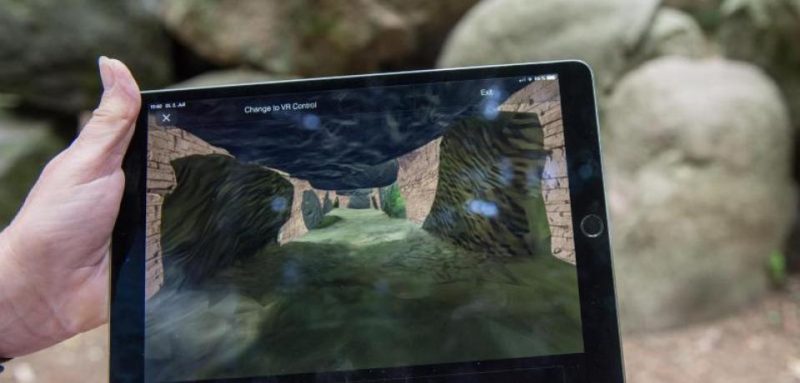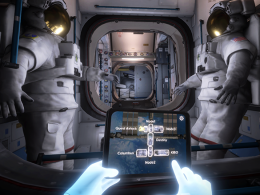Visitors to a historic burial site in Westerkappeln in the very north of NRW can now be realised with the help of Virtual Reality experience what it looked like here 5,000 years ago.
With the help of a 3D animation, the municipal Landschaftsverband Westfalen-Lippe is bringing a millennia-old burial site to life. At first glance, the 5,500-year-old so-called Grosse Sloopsteene near Lotte-Wersten in the district of Steinfurt are just a collection of huge boulders. The stones, weighing up to 12 tonnes, lie in a wooded area. The unsuspecting observer may not realise that this is the best-preserved large stone grave in Westphalia. The site is even older than the pyramids in Egypt.
Archaeology presented differently
Together with Bremen University of Applied Sciences, LWL archaeologists created the 3D animation from millions of pieces of data, as Barbara Rüschoff-Parzinger, Head of Cultural Affairs, explained on site on Tuesday. This can be viewed with virtual reality glasses or on the LWL website. "You don't have to rethink archaeology, but you can present it differently," said Rüschoff-Parzinger. She is delighted that people today can now take a visual journey through time to see how people laid their dead in this burial site 5,500 years ago.
"We have to put images in people's minds," said the Head of Cultural Affairs about the project. In the case of stones or soil discolouration, the archaeologists have to show what is behind them. "If they succeed, people will come to the museum all the more. This project is additional advertising," said Rüschoff-Parzinger.
Stones weighing 12 tonnes fly
When the animation is called up, the stones, weighing up to 12 tonnes, fly back into their original position and show the impressive architecture of the people from the early Stone Age. In its original form, the grave was around 18 metres long. As archaeologist Kerstin Schierhold explains, the builders in the early Stone Age had to use animals, ramps and manpower to move the stones, which weighed several tonnes, into the wooded area on the border with Lower Saxony. The people then buried their dead under a mound of earth that they built over the stones.
According to her, there are similar burial sites across Europe in Spain, Portugal and Scandinavia. This tomb in Westphalia is the most southerly of its kind in Germany.
"Based on the current positions of the stones, the megalithic tomb is virtually re-erected in the animation," said project manager Leo Klinke. What today looks like a wild pile of stones with no structure was once a brilliant construction of supporting stones and capstones, topped with a layer of earth for a vegetated roof. Looking at the cairn from the east, the observer can still recognise a line of smaller stones that must have formed the northern boundary in the past.
In 2015, the LWL experts began measuring the Grosse Sloopsteene - which translates as large hatching stones - using high-resolution equipment. Four years later, the first animation is available, allowing viewers to experience the burial site from various locations - including inside.
Source: wdr / welt









